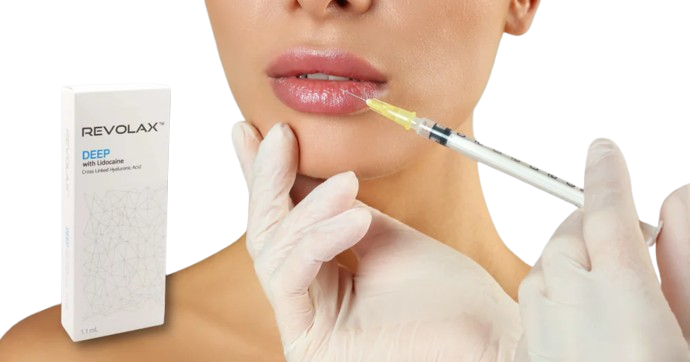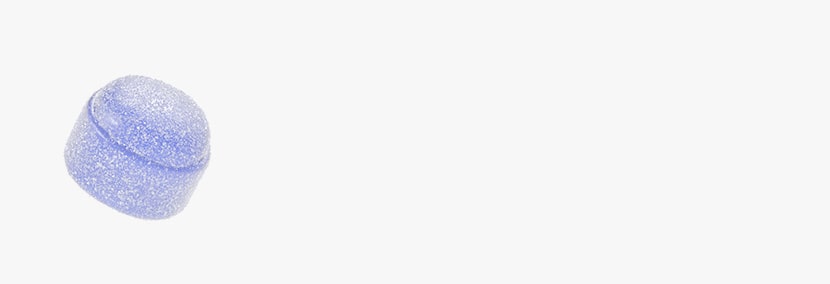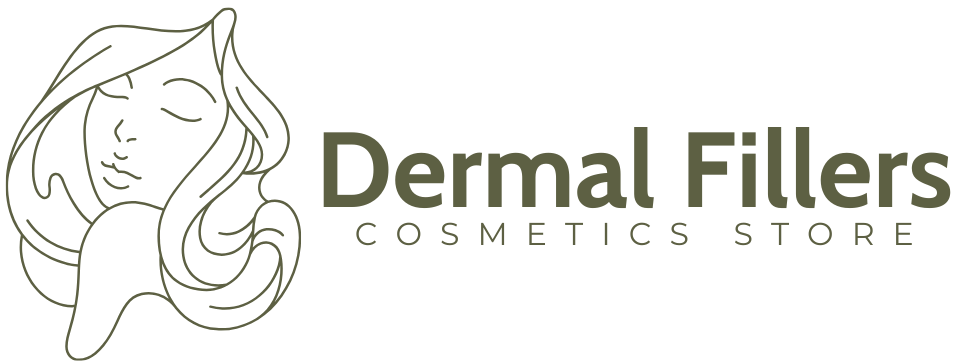Dysport
Dysport vs Xeomin – How Do They Compare?
Sep 10, 2025
The process of facial aging starts earlier than many realize. Long before wrinkles show up on the surface, changes occur beneath the skin — including bone resorption and a gradual descent of soft tissue. A well-known study highlighted that shifts in the facial skeleton, particularly around the eyes and midface, play a major role in how the face appears older over time. When combined with repetitive muscle movement, these changes set the stage for expression lines, volume loss, and sagging.
To smooth these visible signs, patients often consider botulinum toxin type A injectables. Among the most widely used are Xeomin and Dysport, which temporarily relax targeted facial muscles to soften dynamic wrinkles. While they share the same purpose, the two treatments differ in important ways, including their formulation, diffusion, and onset of action.
In this article, we’ll break down these differences in a clear, straightforward way to help you understand each option — and support you in making a personalized decision with your provider.
Key Takeaways
- Dysport and Xeomin are both botulinum toxin type A injectables used to soften dynamic wrinkles.
- Dysport includes accessory proteins, which may result in broader diffusion and a slightly faster onset (24–48 hours).
- Xeomin is a purified formulation with no accessory proteins, offering precise placement and a lower risk of antibody formation.
- Both typically last 3–4 months, although the duration of Dysport’s effect can vary depending on factors such as muscle activity, metabolism, and dosage.
- Dysport is often preferred for moderate to severe wrinkles and broader areas like the forehead.
- Xeomin is ideal for finer lines or patients with sensitivities to additional proteins.
- The best choice depends on treatment goals, anatomy, and prior response to neurotoxins — and should always be guided by a qualified provider.
About: Trusted by over 2,000+ global clients since 2014, Maylips has become a leading supplier of cosmetic, skincare, and orthopedic products for medical and aesthetic professionals. Maylips offers a wide range of authentic brand-name products at competitive wholesale prices, sourced from around the world. If you’re looking to buy Dysport online, contact our sales team for guidance.
Formulation Differences: Accessory Proteins in Dysport vs Xeomin
One of the main differences between Dysport and Xeomin lies in their formulation. Dysport contains accessory proteins along with the active botulinum toxin type A. These proteins are thought to help stabilize the neurotoxin but may also influence how the product spreads after injection. In practice, some providers see this broader diffusion as a benefit, particularly for treating larger areas. Others may prefer more precise control, depending on the treatment goal and location.
Xeomin, by contrast, is a purified formulation that contains only the active neurotoxin—no accessory proteins. Sometimes referred to as a “naked” toxin, this cleaner composition may reduce the risk of the body developing antibodies over time. For patients with sensitivities to additives or who have received repeated botulinum toxin treatments in the past, Xeomin may be a more suitable choice.
This difference in formulation doesn’t just affect how the products perform – it can also play a role in patient safety, immune response, and long-term treatment success.
Comparative Efficacy: Smoothing Fine vs Moderate-severe Wrinkles with Dysport
When comparing Xeomin vs Dysport, wrinkle severity is a crucial factor in choosing the right product. Dysport has shown strong results in addressing moderate to severe expression lines, particularly in areas like the glabella (frown lines between the brows). Its broader diffusion pattern can offer more coverage in dynamic, active muscle groups, which is often helpful for deeper folds or multiple lines.


Xeomin, with its more targeted and localized effect, tends to perform well in treating fine lines and the earlier signs of aging. Because it allows for precise placement, it can be ideal for subtle enhancements or patients who prefer a lighter touch.
While some comparative studies suggest that Dysport may provide a greater reduction in wrinkle severity scores, both products have demonstrated effectiveness across a wide range of patients. Results often depend on individual anatomy, provider technique, and treatment goals.
In the end, both neurotoxins work well for smoothing wrinkles—choosing between them usually comes down to the severity of lines, area being treated, and personal preference.
Onset, Diffusion, and Duration: Dysport vs Xeomin
Though both Xeomin and Dysport are botulinum toxin type A injectables, they differ in several key ways:
Diffusion
- Dysport: Tends to spread more broadly after injection, making it a good fit for treating larger areas, such as the forehead or trapezius muscles.
- Xeomin: Remains more localized, which allows for precise application in smaller or more delicate zones like crow’s feet or glabellar lines.
Diffusion can also be influenced by dosage, injection depth, and muscle anatomy, not just formulation alone.
Onset of Action
- Dysport: May produce visible effects within 24 to 48 hours, which is slightly faster than other neurotoxins.
- Xeomin: Begins working in 3 to 4 days, though some patients report seeing changes as early as day two.
Duration
- Both products typically last around 3 to 4 months, though individual experiences can vary.
- A common question is “How long does Dysport last?” The answer depends on muscle strength, lifestyle, metabolism, and how the treatment is performed. Some patients may notice results lasting closer to 5 months, while others may need retreatment sooner.
Formulation
- Xeomin contains only the purified neurotoxin, with no accessory proteins, making it ideal for patients concerned about potential antibody formation.
- Dysport contains additional proteins, which may affect both the spread and immune response over time.
Clinical Decision-making: Selecting Dysport or Xeomin Per Patient Needs
Deciding between Dysport and Xeomin isn’t a one-size-fits-all process. A well-informed choice depends on several factors, including wrinkle severity, treatment area, personal medical history, and response to past treatments.
Factors to Consider


- Wrinkle Severity: Dysport is often preferred for treating moderate to severe wrinkles, while Xeomin may be better suited for wrinkles and subtle enhancements.
- Treatment Area: Dysport’s broader diffusion makes it a good option for wide or dynamic zones, like the forehead. Xeomin’s precision makes it ideal for smaller or targeted areas.
- Protein Sensitivity: Patients who have sensitivity to accessory proteins or have developed treatment resistance may benefit from Xeomin’s pure formulation.
- Desired Onset: If quick results are a priority, Dysport’s faster onset may be more appealing.
- Treatment History: Patients who’ve built tolerance to other neurotoxins may respond better to Xeomin due to its unique formulation.
A skilled provider will take all of these factors into account, working closely with the patient to create a treatment plan that is safe, effective, and tailored to their goals.
Conclusion
Both Dysport and Xeomin are well-established treatments for smoothing dynamic facial wrinkles. While they share similarities in function and duration, their differences in formulation, diffusion pattern, and wrinkle-specific performance can influence which one is best for each individual.
- Dysport is often the go-to for broader areas and deeper wrinkles.
- Xeomin offers a more precise approach and may reduce the risk of antibody formation over time.
The best option ultimately depends on the patient’s anatomy, concerns, and preferences, as well as the provider’s experience and guidance. When administered by a qualified professional, both options deliver safe, natural-looking results that help patients look refreshed and feel more confident.
FAQs
1. How long does Dysport last compared to Xeomin?
Both typically last 3–4 months. Some patients report that Dysport lasts slightly longer, but results vary based on metabolism, muscle activity, and other individual factors.
2. Is Dysport better for moderate wrinkles?
Dysport is often preferred for moderate to severe wrinkles due to its broader diffusion, which helps cover larger muscle groups.
3. How quickly will I see Dysport results?
Most patients notice improvements within 24 to 48 hours, which can be faster than Xeomin’s typical 3–4 day onset.
4. Can Dysport be used on all wrinkle types?
Yes, Dysport works well for dynamic wrinkles, including glabellar lines, forehead lines, and crow’s feet. For finer lines, Xeomin or other neurotoxins may be a better fit.
5. What are the side effects of Dysport?
Common side effects include mild swelling, bruising, or headache at the injection site. These usually resolve within a few days.
6. Is Dysport safe for repeated use?
Yes. Dysport is FDA-approved for ongoing use and has been shown to be safe in long-term treatment plans when administered by a trained provider.
7. How do I know if Dysport is right for me?
The best way to decide is through a consultation with a licensed aesthetic provider who can assess your wrinkle concerns, treatment history, and goals.
Talk with our sales representative.
Book a Meeting
References
Swift A, Liew S, Weinkle S, Garcia JK, Silberberg MB. The facial aging process from the “Inside Out.” Aesthetic Surgery Journal. 2020;41(10):1107-1119. doi:10.1093/asj/sjaa339
Wilson AJ, Chang B, Taglienti AJ, et al. A Quantitative Analysis of OnabotulinumtoxinA, AbobotulinumtoxinA, and IncobotulinumtoxinA: A Randomized, Double-Blind, Prospective Clinical Trial of Comparative Dynamic Strain Reduction. Plast Reconstr Surg. 2016;137(5):1424-1433. doi:10.1097/PRS.0000000000002076
Casas L, Phillips N, Bank J. Patient-centric dose equivalency pilot study of incobotulinumtoxin a (xeomin) vs. abobotulinumtoxin a (dysport) in the treatment of glabellar frown lines. Plastic and Aesthetic Research. 2015;2(1):12. doi:10.4103/2347-9264.149366





